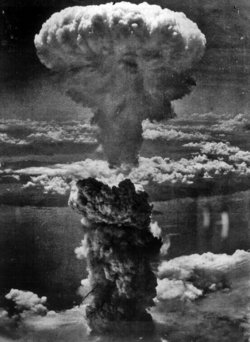By Susan Diesenhouse
Tribune staff reporter
Published January 31, 2006
Tribune staff reporter
Published January 31, 2006
Exxon Mobil Corp. reported Monday that it earned a profit of $36.13 billion in 2005. It was the biggest annual profit ever for a U.S. company, economists and analysts said.
What will Exxon do with all that money?
Shareholders will benefit, but consumers certainly won't see a break at the pump.
The most interesting question is how much the energy behemoth intends to invest in its businesses, particularly in the exploration for new sources of energy.
"We'd love to invest more in the U.S., but the key is having access to the most promising areas," said Mark Boudreaux, an Exxon spokesman.
Such fertile grounds could be offshore along the West and East Coasts, off the west coast of Florida and perhaps Alaska, he noted. But these locations represent environmentally sensitive areas where drilling has been blocked by state and federal agencies.
Exxon's 2005 net income of $36.13 billion was up 43 percent from a year earlier. Revenue for all of its corporate operations amounted to $371 billion. It has $33 billion in cash on hand and only $8 billion in debt.
Just five years earlier, Exxon reported 2000 revenue of $227.60 billion and net income of $17.72 billion.
Since the decade began, Exxon's revenue has risen more than 50 percent and profit has nearly doubled.
U.S. consumers expecting to share in this bounty may have quite a wait, according to Arthur L. Smith, the Houston-based chief executive of John S. Herold Inc., an independent oil and gas research and consulting firm in Norwalk, Conn.
"It will take an economic recession for prices to drop at the pump," he said. "All indications are that demand for petroleum is unfazed by high prices."
Exxon has been generous with investors. In 2005, Exxon lavished shareholders with $23 billion in dividends and stock buy-backs, a 56 percent increase from a year earlier, the company reported.
Petroleum prices averaged more than $56 a barrel last year, a 36 percent increase over 2004, according to the U.S. Department of Energy. Meanwhile, Exxon invested $17.7 billion in capital expansion and exploration activities that could increase future supplies. That was a 19 percent increase over the $15 billion that the company invested in 2004.
But that came on the heels of a six-year-period in which the outlay to expand infrastructure was relatively flat. Indeed in 1998, when oil was selling for about $10 a barrel, Exxon invested about $15 billion in capital and exploration, according to Boudreaux.
Exxon's investments in capital and exploration seem skimpy to some.
"I've been surprised at the extent to which companies like Exxon are using their cash flow to buy back shares rather than make additional investments in infrastructure," said James Hamilton, a professor of economics at the University of California at San Diego.
Energy prices have surged to meet the needs of growing economies in Asia, India and the U.S. They also rose after hurricanes interrupted supplies from the Gulf of Mexico.
In part, therefore, Exxon's banner performance in 2005 reflects that "demand continues to grow but supply hasn't been increasing," said Lysle Brinker, a senior analyst at Herold. He added that this supply-demand scenario isn't likely to change soon.
The company is also benefiting from its own operational efficiency, Brinker added. Compared to other oil companies like Chevron, he said, "Exxon appears to be doing a good job controlling costs while making wise, disciplined investment to replace maturing fields."
The company, which has operations in 200 countries and 85,000 workers worldwide, has invested in production facilities in Russia, China, Angola and Nigeria.
----------
sdiesenhouse@tribune.com
What will Exxon do with all that money?
Shareholders will benefit, but consumers certainly won't see a break at the pump.
The most interesting question is how much the energy behemoth intends to invest in its businesses, particularly in the exploration for new sources of energy.
"We'd love to invest more in the U.S., but the key is having access to the most promising areas," said Mark Boudreaux, an Exxon spokesman.
Such fertile grounds could be offshore along the West and East Coasts, off the west coast of Florida and perhaps Alaska, he noted. But these locations represent environmentally sensitive areas where drilling has been blocked by state and federal agencies.
Exxon's 2005 net income of $36.13 billion was up 43 percent from a year earlier. Revenue for all of its corporate operations amounted to $371 billion. It has $33 billion in cash on hand and only $8 billion in debt.
Just five years earlier, Exxon reported 2000 revenue of $227.60 billion and net income of $17.72 billion.
Since the decade began, Exxon's revenue has risen more than 50 percent and profit has nearly doubled.
U.S. consumers expecting to share in this bounty may have quite a wait, according to Arthur L. Smith, the Houston-based chief executive of John S. Herold Inc., an independent oil and gas research and consulting firm in Norwalk, Conn.
"It will take an economic recession for prices to drop at the pump," he said. "All indications are that demand for petroleum is unfazed by high prices."
Exxon has been generous with investors. In 2005, Exxon lavished shareholders with $23 billion in dividends and stock buy-backs, a 56 percent increase from a year earlier, the company reported.
Petroleum prices averaged more than $56 a barrel last year, a 36 percent increase over 2004, according to the U.S. Department of Energy. Meanwhile, Exxon invested $17.7 billion in capital expansion and exploration activities that could increase future supplies. That was a 19 percent increase over the $15 billion that the company invested in 2004.
But that came on the heels of a six-year-period in which the outlay to expand infrastructure was relatively flat. Indeed in 1998, when oil was selling for about $10 a barrel, Exxon invested about $15 billion in capital and exploration, according to Boudreaux.
Exxon's investments in capital and exploration seem skimpy to some.
"I've been surprised at the extent to which companies like Exxon are using their cash flow to buy back shares rather than make additional investments in infrastructure," said James Hamilton, a professor of economics at the University of California at San Diego.
Energy prices have surged to meet the needs of growing economies in Asia, India and the U.S. They also rose after hurricanes interrupted supplies from the Gulf of Mexico.
In part, therefore, Exxon's banner performance in 2005 reflects that "demand continues to grow but supply hasn't been increasing," said Lysle Brinker, a senior analyst at Herold. He added that this supply-demand scenario isn't likely to change soon.
The company is also benefiting from its own operational efficiency, Brinker added. Compared to other oil companies like Chevron, he said, "Exxon appears to be doing a good job controlling costs while making wise, disciplined investment to replace maturing fields."
The company, which has operations in 200 countries and 85,000 workers worldwide, has invested in production facilities in Russia, China, Angola and Nigeria.
----------
sdiesenhouse@tribune.com
Copyright © 2006, Chicago Tribune







No comments:
Post a Comment